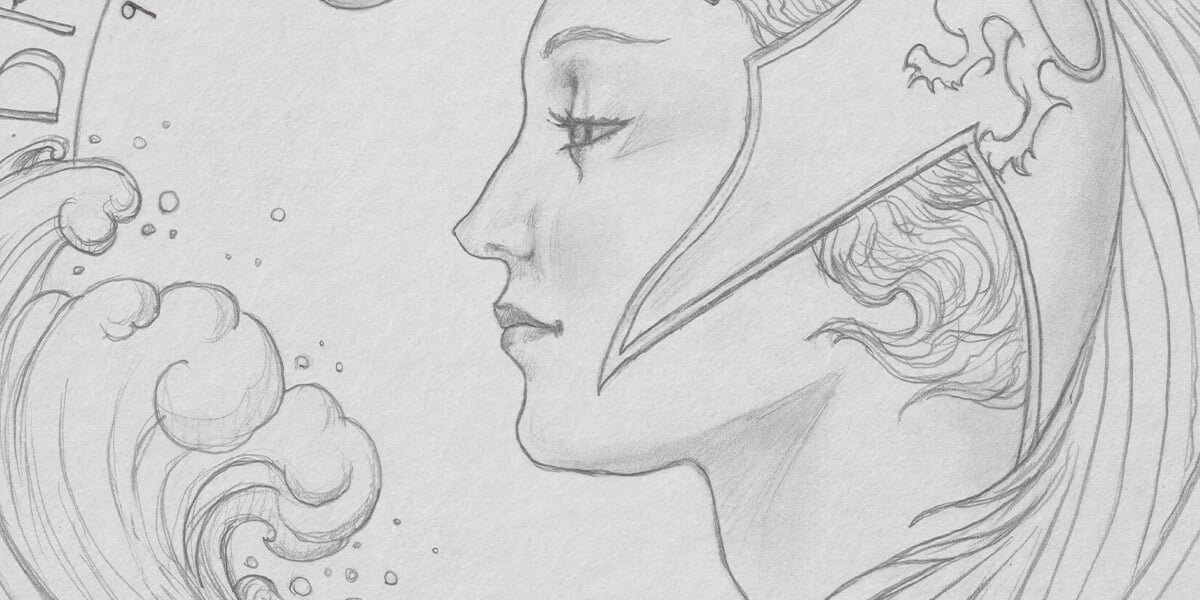The reverse design for the Britannia 2024 UK commemorative coin blends mythology with modernism, portraying the legendary figure facing an oncoming wave, into which her plumed helmet flows to represent her historic connection with the sea.

Designed by award-winning French author and illustrator Marie-Alice Harel, we caught up with the artist to glean her inspiration for this fresh interpretation of the timeless icon.
After receiving the submission invite, what were you most looking forward to about this project?
“I was excited to work on something different. My work usually focuses on design and illustrations for books, so I had to think differently for this project – working in 3D instead of 2D, in a round format, and trying to project how a drawing would translate into a sculptural rendition of the character. “I was also looking forward to exploring the symbolism and mythology attached to Britannia, and to integrate this within the design.”
How did it feel when you found out that your design had been chosen to feature on the coin?
“I was incredibly excited and honoured! And, to be fair, a little anxious too as, although Edinburgh is now my home and I’ve been living in the UK since 2014, my French nationality makes me feel a little bit of a fraud for this project. That said, I experience some form of imposter syndrome for every project I undertake.”

Do you have any personal connections to the subject matter?
How did you approach the initial design concept?

Did you undertake any research for the theme?
“I learned more about the symbols associated with Britannia, as well as their historical and mythological roots. I remember being surprised that so many of her attributes and representations are linked with ancient Roman and Greek civilisations.
“I researched visual references from different sources, such as ancient helmets, illustrations, sculptures, but also previous coins. I wanted to have a good grasp of the character, so that my representation would stay true to her essence and tradition, while at the same time being aware of what has been done before to avoid repeating existing designs.”
Could you talk us through any iterations that led you to the final design?
“I started by drawing several quick sketches, exploring various ideas. From these ten or so rough drawings, I chose four that I developed into more precise and detailed drawings. One of those was selected to be developed into a 3D model.
“At every stage of the process, I had guidance and helpful feedback from The Royal Mint. There were a number of iterations on the 3D rendering, spread out over several months. It’s tricky to translate a 2D drawing into a volume, so several adjustments were needed to make sure that the coin design looked right.”

Were there any challenges you faced in creating the design?
“Going from 2D to 3D was challenging; it took time to get the volumes right, especially in important and tricky areas like the eye.
“I am grateful for the work of the designers who had the difficult task of translating the design into a 3D model, and who were patient with my feedback and suggestions. I had fun creating fonts for the text, but they too required extra work in terms of shapes and spacing.”
Be inspired

AN ANCIENT SYMBOL OF STRENGTH AND FORTITUDE
Explore Britannia's Origins